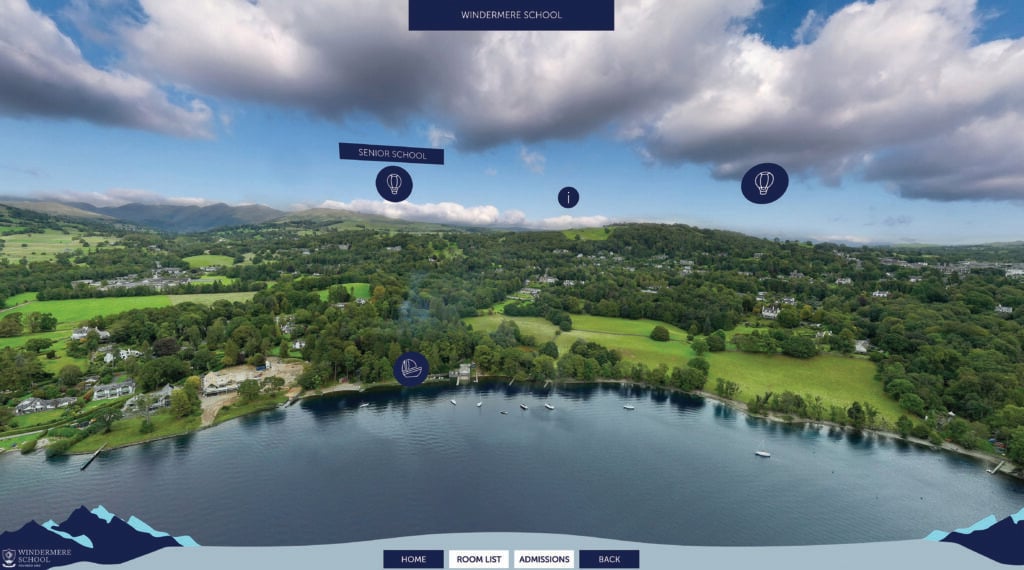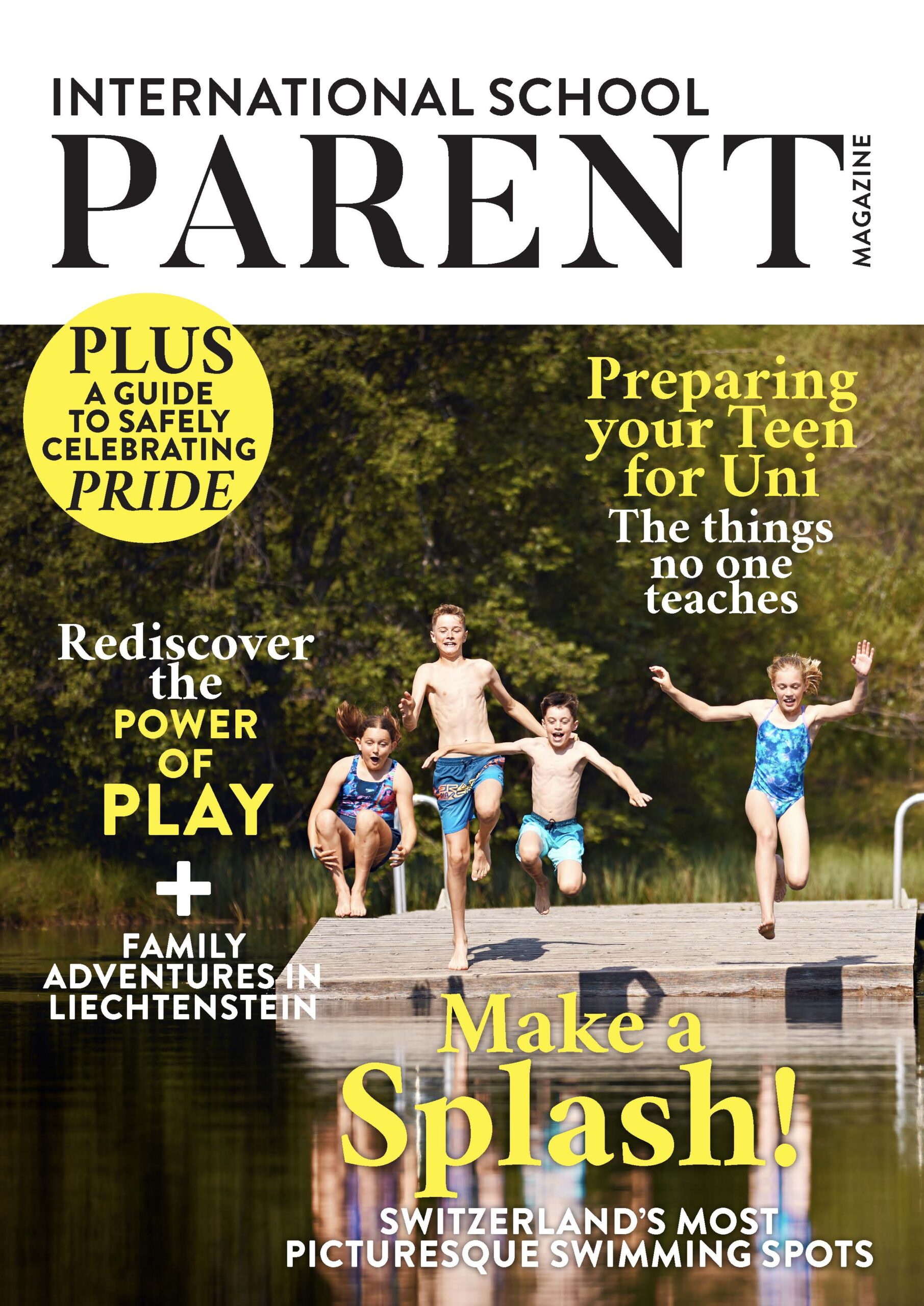360 Virtual Tours: The New Marketing Tool for Independent Schools

Parents should expect change in how schools interact with their audience
The COVID-19 pandemic had a profound impact on the education sector. As schools were forced to adapt to new ways of teaching and learning, they have also had to adjust their marketing strategies to attract new students in a rapidly changing landscape. With in-person events and tours no longer feasible in many cases, schools turned to innovative new digital marketing tools to showcase their offerings to prospective parents. One such tool that has emerged as a powerful marketing tool is 360 virtual tours. Whilst 360 tours have been around for longer than a decade, pre-pandemic adoption of virtual tours in schools was very low. But the pandemic, along with other factors, created a shift in strategy and school marketers rushed to include virtual tours in their bank of digital assets.
By way of background, virtual tours allow you as parents to explore the school’s facilities, classrooms, brand proposition, school values and community from the comfort of home. They offer an immersive and engaging experience, when done right, that provides an in-depth look at what each school has to offer, highlights their academic and extracurricular offerings, and provides a sense of the school’s culture. Unlike static images or videos, which tend to be found spread across multiple mediums – the school website, other websites, socials and portals – virtual tours allow families to navigate the spaces and get a sense of what it would be like to be a student. Parents can zoom in, both literally and figuratively, on specific areas of interest and interact in a way that is not possible with other marketing materials. Virtual tours help build affinity with parents and students and give them direct and indirect information. Tours help schools tell their unique stories in a virtual environment, but they also signify to families that the school is going that extra mile to assist them with their choices. By creating an immersive and engaging virtual tour, schools create a strong first impression and attract the attention of prospective parents.
Advances in technology have made it easier and more affordable than ever for schools to create a high-quality virtual tour: a valuable marketing tool for schools of all sizes, increasing the reach to a much larger audience. With 360-degree cameras and virtual tour software, schools now create interactive tours more readily and as a result, many more schools have them as a critical touchpoint in the admissions journey. In turn, they are now an essential part of a prospective families’ expectation during an admissions journey with a school.
Generational shifts of the parental audience means that 360 tours are more the expectation rather than a ‘nice to have’ experience. Gen Z and Millennial parents have higher and different expectations of digital experiences than the departing Gen X audience. Research shows they expect digital experiences to be mobile-friendly, streamlined, efficient, authentic, gamified (fun), personalised and intuitive. They are accustomed to instant gratification and expect fast loading times, quick results, and easy navigation. Virtual Tours can provide this experience for those parents – it’s an immediate solution to “I want to know all about it now, quickly, and realistically and on my own terms”.
Whilst the advances in technology and generational changes facilitated a boom in need and availability of virtual tours, the pandemic then sealed their fate. Demand from schools, to create a virtual tour, soared in 2020 and now we’re very close to 1 in 2 independent schools having one. This cocktail of factors – technology, accessibility, affordability, generational expectations and a pandemic – means parents now have access to a new way to engage with schools that’s become the norm for school marketing, and a requirement from families. It’s the modern approach to recruitment.
Let’s look at some advantages. A 360 tour visit is a cost and time savings for you as parents, as well as an environmentally conscious decision to reduce your carbon footprint. Families are increasingly time-poor so whilst an in person visit may only be an hour’s drive, a 2-hour event and an hour home, those are precious family time hours squeezed into an already busy week. So whilst there are parents who can physically visit a school, they may opt not to if there is a viable alternative to explore what the school feels like. Virtual tours also act as a surrogate visit for those parents who live abroad, when an in-person visit is impossible. Virtual tours offer an option of convenience that is contemporary and socially-aware.
With economic pressures affecting parents’ disposable income and potential changes to fees, schools will be approaching engagement in different ways to continue to compete for parents’ attention and draw them from the competition, offering a point of differentiation. From a school’s perspective, a virtual tour is also a cost-savings to them – reducing the costs for print material, travel expenses and Open Day events which is great news for any school’s dwindling marketing budget. A study by the Enrollment Management Association found that schools offering virtual tours had a 42% increase in completed applications compared to schools that did not. When considering where to spend their budget, this is a particularly powerful statistic and reason to invest in one.
With virtual tours being such an advantage to both parents and schools, they are playing a hugely important role in the way schools choose to interact with their audience. According to a recent survey by The Independent Schools Show, 70% of parents said that they would use virtual tours to research schools, while 60% said that they would consider using virtual tours as a replacement for in-person visits.
Another report found that schools that implemented virtual tours experienced a 20% increase in website traffic and a 10% increase in enquiries. When considering the data, it is obvious why schools find them an easy solution. Virtual tours are here to stay and will continue to be an important part of the independent school marketing landscape in the future.
Independent schools have successfully implemented virtual tours as part of their marketing strategy already. Roedean School, for example, has created a virtual tour that provides an in-depth look at the school’s facilities and community. The tour allows parents and pupils to explore the school’s campus, its new boarding facilities, and coastal location with embedded video and image galleries.
Windermere School tour showcases its commitment to academic excellence, pastoral care, and co-curricular activities, including their Outdoor Learning Programme with features of hiking, sailing and ghyll scrambling in the Lakes District – bringing their local environment to the forefront. The tour features video testimonials from students and staff, providing a personal touch that helps parents feel connected to the school.

Virtual tours are already part of the admissions journey for most schools, whether experiencing a virtual tour is part of the initial discovery process, the shortlisting process, in advance of, or instead of, an Open Day in-person visit – parents are embracing the change.
Welcome to the new way of school marketing and engaging with parents, adding a more personalised and tailored experience providing information needed to make an informed decision about your child’s education.
